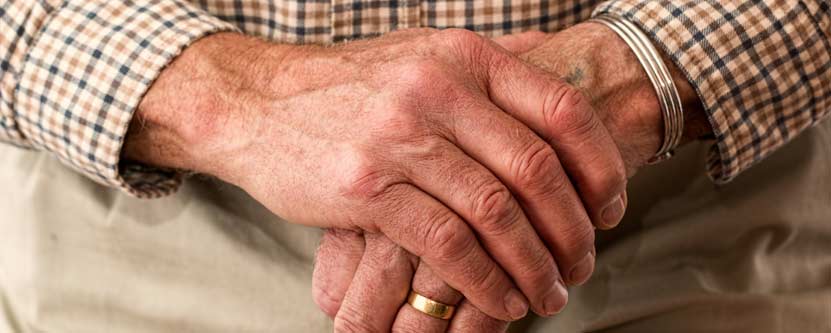Older adults aged 65 yrs or above are prone to injuries and accidents more frequently over youngsters.
[the_ad id=”6082″]
Their body strength and immune system is way weaker than that of the youth. Therefore, in case of any medical emergencies, you may have to provide immediate first aid to save their lives. In most of these cases, you do not need scientific knowledge to provide help, but just first aid knowledge is enough. So, understand them and be prepared to provide your helping hand to the seniors.
Situations, which can be handled with first aid:
- Cuts and scrapes
- Falls and injuries
- Temperature fluctuations related illnesses
- Heart-related problems
- Diabetic shock
Cuts and scrapes
The skin of the elderly people is very fragile which increases their risk for cuts and scrapes. These injuries can get infected especially in the older adults with chronic conditions such as diabetes.
What should you do?
If the cuts are minor, then clean them with water to wash the dirt and debris away from the wound. In the case of bleeding, tie a clean bandage (or cloth if a bandage is not available readily). Apply a little pressure on the bandage to prevent bleeding. Raise the injured part above the level of the heart to reduce circulation to the portion and cut down excess bleeding. If the bleeding has wet the bandage, then do not remove it. Instead, tie another one over the previous bandage.
In the case of a severe injury with uncontrolled bleeding, take the person to the emergency ward immediately. Look for the signs of infection such as swelling, redness, drainage from the wound and apply an antibiotic cream.
Falls and injuries
As per the CDC (Centers for Disease Control and Prevention), nearly one in every three older adults falls each year. The risk is high due to their poor vision, weakness, medication-related dizziness, physical inactivity, etc. Falls can lead to head injuries, fractures, and lacerations.
What should you do?
If the elderly is not hurt badly with the fall, then help the person to find a comfortable position. Elevate the injured area and apply an ice pack for about 10 minutes. This helps to treat minor bruises and bumps. In the case of a severe injury with bleeding and bruising, take the person to emergency care.
If there is a serious injury to the head, neck, back, hips or thighs, then do not move the patient much; take him/ her to the emergency services center. Keep the patient warm until the medical help is provided.
Temperature fluctuations related illnesses
The chronic illnesses that occur in older people impair their ability to regulate their body temperature. Additionally, the prescribed medicines taken regularly by the elderly, affect their ability to maintain a balanced body temperature. It is therefore, advisable to apply sunscreen and wear protective clothing when they have to go out. Hydration also helps them to reduce their risk for heat-related illnesses. During winters, they should wear several layers of clothing to protect from low temperatures.
Heat stroke and what you should do
Heat stroke is a condition in which the temperature of the body raises to 40oC or above and breathing rate is higher than normal. The other symptoms include nausea, vomiting, and headache. If you notice someone with a heat stroke, transfer them to a cold place and give them a cold shower and cold water to drink. Wrap the patient in wet towel or bed sheets.
Hypothermia and what you should do?
Hypothermia is a condition in which the body temperature drops much below the normal. The other symptoms include shivering, dizziness, an increase in heart rate and breathing whose severity varies with the severity of hypothermia.
Call for emergency help and in the meanwhile, ensure you warm up the patient by rubbing his hands and legs. Take them away from the cold temperature, remove the wet clothes (if any), and wrap the patient in a warm blanket. Focus on warming the chest and abdominal regions and then move on to the limbs.
Heart-related problems
The risk of heart attacks and heart failure is higher in elderly due to the changes in their blood vessels and heart. Symptoms of heart attack mainly include a sharp chest pain and tightness in the chest with breathing difficulty. Symptoms of stroke mainly include a drooping face, irregular heartbeat, weakness in the arms and difficulty in speaking.
If you see an elderly who collapses suddenly with an attack, then make the patient lie down immediately on his/ her back. Check if the person is breathing. If not, give a chest compression and help in breathing by providing mouth-to-mouth respiration. Call for an ambulance as soon as possible.
Diabetic shock
Diabetes is common among the elderly and due to the medication, the patient can have diabetic shocks, which means a drastically low sugar levels in the blood of the patient. Symptoms include dizziness, fainting, and fatigue. If you find a diabetic elderly patient with such symptoms, you should provide a candy or biscuits to reset the blood glucose levels to normal.
Poisoning with drugs
Due to their poor cognitive ability, elderly patients may get confused and take more drugs than prescribed or take wrong medications. If you are a caretaker, then you may help the elderly by organizing the medications and providing them at a regular schedule.
It is a good idea to take training in the CPR (cardio pulmonary resuscitation) technique to help the elder people who is unable to breathe due to any of the above problems. You may not know what time you need to perform a first aid. Being cautious can help save their lives.
Source:

